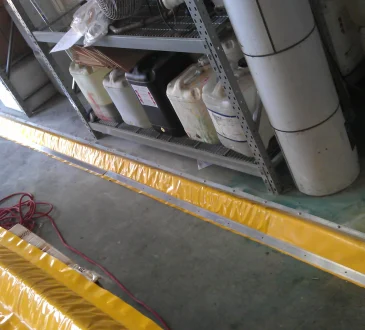The eye of industrial automation is machine vision. Machine vision techniques attempt to understand images using cameras, sensors, and computing power in order to enable machines (robots or other industrial tools) to complete industrial tasks such as manufacturing and quality assurance.
Capture, process, and action are the three steps that make up the machine vision process. Machine vision is a critical component of Industry 4.0. It benefits industrial automation systems in a variety of ways, including increasing efficiency through better inventory management, detecting faulty products, and improving manufacturing quality.
What is Machine Vision?
Machine vision techniques allow machines to perform tasks that require vision. How is machine vision different from computer vision, according to Wikipedia?
Machine vision is a tool used in the industrial field to control machines autonomously. Computer vision is a type of technology that allows images to be processed and understood. Consider an industrial robot that is specifically equipped and programmed to detect faulty products on a manufacturing line. While computer vision focuses on the algorithms that identify visual defects, machine vision companies encompasses the entire system that both detects and eliminates defects from the manufacturing process.
How does Machine Vision work?
Main three main steps to learn how machine vision works.
Image Capturing:
The image is captured using vision sensors, digital cameras, ultraviolet or infrared cameras. This is a snapshot of a single or multiple instances. The image is captured and converted into digital data by the hardware.
Image Processing:
Image processing algorithms can be used to analyse the digital data generated by the hardware. In machine vision, there are three main steps in image processing:
Pre-processing: Noise removal and contrast enhancement are part of the pre-processing process.
Image acknowledgement:
Breakdown: A threshold happens to be applied and the edges of the image happens to be determined in this procedure.
Feature Extraction: Color, Size, shape, length, or combination of these structures can be extracted in this procedure.
System Action:
The machine is instructed to perform the necessary action based on the information extracted in the previous step.
Why is Machine Vision significant now?
As explained, in the last decade, the cost of cameras has decreased and image recognition accuracy has improved, resulting in more accurate and less expensive machine vision systems.
With their industry 4.0 initiatives, which aim to improve industrial processes with computing technology, industrial companies hope to achieve increased automation and efficiency. Machine vision products have been able to deliver on this promise since the rise of deep learning, and as a result, industrial companies have been investing in these systems.
As a result, according to multiple sources, the market grew quickly and is expected to continue to grow rapidly.
What are the benefits of machine vision?
Machine vision systems are in high demand because they allow manufacturers to work faster and more accurately in the manufacturing process. Machine vision makes it possible to automate at a higher rate: Machine vision systems that are more advanced allow machines to take on a larger share of industrial work. Employees can be directed to more productive areas as work is automated (for example, production control work).
A few examples of automation comprise:
High-quality and Fast production control: Because of the machine vision’s rapid processing capability, defective parts can be identified quickly. Simultaneously, by eliminating human error, the risk of error is reduced.
Inventory control: Products can be quickly and individually controlled during storage and distribution thanks to machine vision systems like barcode scanners.
Predictive preservation: Predictive maintenance systems can be triggered by visual data. These systems, on the other hand, rely more on sensors like heat and vibration detectors.
What are Machine Vision companies?
There are two types of companies that provide machine vision solutions: hardware and software. However, some companies offer end-to-end solutions that include both hardware and software components.




